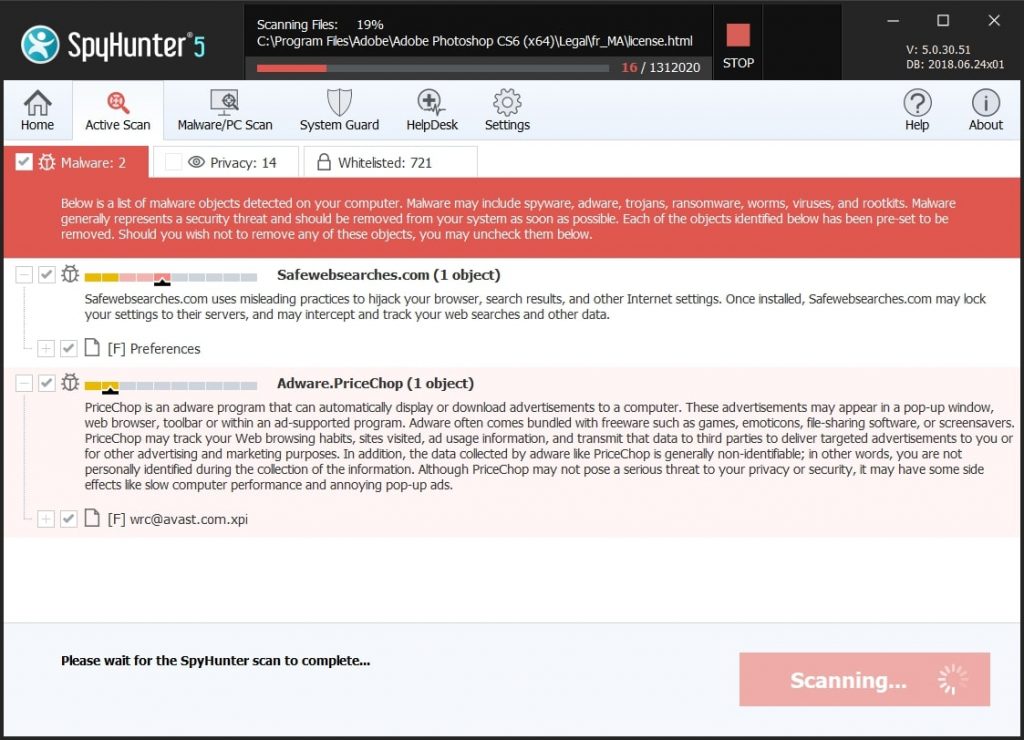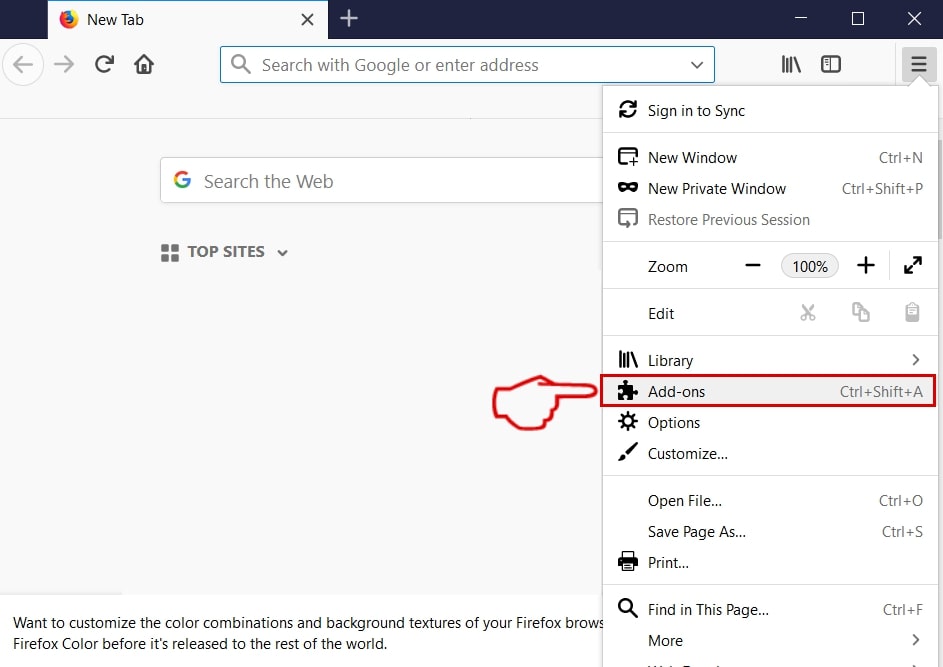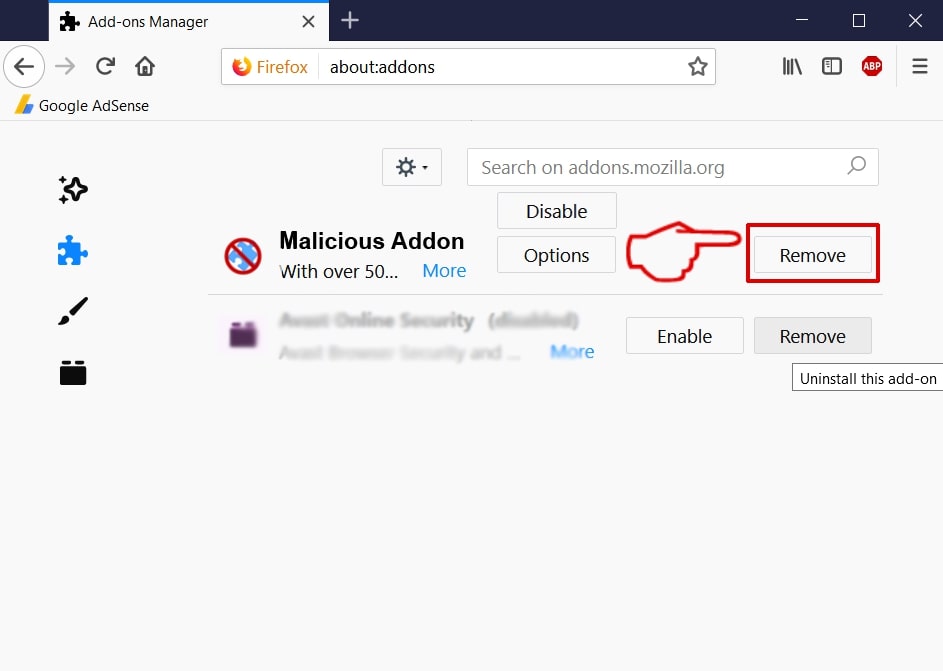What Is DirectNetwork?
 DirectNetwork is an ad-supported application (adware) that targets macOS users. It is similar to IndexInterface and NavigateNetwork.
DirectNetwork is an ad-supported application (adware) that targets macOS users. It is similar to IndexInterface and NavigateNetwork.
DirectNetwork displays advertisements which could take you to pages deployed for social engineering scams, fake download pages, fake error messages known as scareware. Scareware is often associated with tech-support scams, pushing rogue (fake) software. In most cases, this software turns out to be nothing but bloatware. Even though relatively harmless, scareware can damage your computer or can open the door to more severe issues. In addition, in many cases, programs such as DirectNetwork can collect sensitive information related to your browsing, financial information, or various online accounts.

DirectNetwork Threat Summary
| Name | DirectNetwork |
| Type | Browser Hijacker, Redirect, PUA |
| Short Description | A suspicious browser extension that hijacks your browsers. |
| Symptoms | Unwanted pop-ups may start appearing while you are browsing the web. A browser hijacker may be downloaded without your knowledge. |
| Distribution Method | Freeware Installations, Bundled Packages |
| Detection Tool |
See If Your System Has Been Affected by malware
Download
Malware Removal Tool
|
| User Experience | Join Our Forum to Discuss DirectNetwork. |
DirectNetwork Adware – How Is It Distributed?
Below you will find popular ways that suspicious developers employ to distribute browser redirects, hijackers, adware and PUPs. One of the most common ways is using bundled software installations, a.k.a. software bundling and bundled installers, which is not an illegal practice but could be used to generate profit on a pay-per-install basis. Furthermore, there is no telling where such a redirect could take you, as it may lead you to a scam website that could try to make you download a rogue software product.
Also note that DirectNetwork may be available for download on software platforms and free download sites. In addition, suspicious apps sneak into legitimate, official stores, such as Chrome Web Store. For example, last year, Google removed 106 malware extensions from its Web Store following an audit of irregular code.
Distribution Method: Software Bundling
The appearance of the DirectNetwork extension may be a result of a bundled installer. Such bundled installers come from download sites that host packaged archives laced with adware, browser plugins, potentially unwanted applications (PUAs), and even malware. You may have downloaded such an installer in an attempt to download a legitimate application.
Software bundling is not illegal but it often causes unwanted, additional downloads, even of legitimate products. To avoid it from happening, you should be more careful during the installation steps of freeware applications.
Distribution Method: Unsafe browsing and clicking fake alerts
Another scenario that may have caused the appearance of this adware is unsafe browsing. Maybe you recently clicked on a fake pop-up warning, suggesting that your antivirus has expired or that Adobe is out of date. Here’s an example of a Norton scam:

These are popular examples of fake tech-support scams that are known to cause browser redirects and unwanted downloaded on affected computers.
Also, be aware that if you interact with any of the content seen on DirectNetwork, you may end up being flooded with even more unwanted apps. That is why we encourage you to make sure your computer system is safe against any related online threats.
Is DirectNetwork a Virus?
Adware apps are not considered computer viruses. However, they are known to take users to suspicious pages. If you interact with any of the content DirectNetwork provides, like clicking downloading the provided extension, you can unknowingly install a potentially unwanted app or browser hijacker. If your homepage and new tab page are changed without your consent, you may have a browser hijacker “attached” to your browser.

How to Remove DirectNetwork Adware
To remove DirectNetwork and all its associated components, all you need to do is complete several removal steps. The instructions below provide both manual and automatic removal methods. To get rid of all the files installed by unwanted applications, we recommend that you combine the steps.
Lastly, keep in mind that the manual removal may be quite a complicated process that requires tech-savvy skills. If you don’t feel comfortable with the manual steps, you can rely on automatic removal.
Steps to Prepare Before Removal:
Before starting to follow the steps below, be advised that you should first do the following preparations:
- Backup your files in case the worst happens.
- Make sure to have a device with these instructions on standy.
- Arm yourself with patience.
- 1. Scan for Mac Malware
- 2. Uninstall Risky Apps
- 3. Clean Your Browsers
Step 1: Scan for and remove DirectNetwork files from your Mac
When you are facing problems on your Mac as a result of unwanted scripts and programs such as DirectNetwork, the recommended way of eliminating the threat is by using an anti-malware program. SpyHunter for Mac offers advanced security features along with other modules that will improve your Mac’s security and protect it in the future.

Quick and Easy Mac Malware Video Removal Guide
Bonus Step: How to Make Your Mac Run Faster?
Mac machines maintain probably the fastest operating system out there. Still, Macs do become slow and sluggish sometimes. The video guide below examines all of the possible problems that may lead to your Mac being slower than usual as well as all of the steps that can help you to speed up your Mac.
Step 2: Uninstall DirectNetwork and remove related files and objects
1. Hit the ⇧+⌘+U keys to open Utilities. Another way is to click on “Go” and then click “Utilities”, like the image below shows:

2. Find Activity Monitor and double-click it:

3. In the Activity Monitor look for any suspicious processes, belonging or related to DirectNetwork:


4. Click on the "Go" button again, but this time select Applications. Another way is with the ⇧+⌘+A buttons.
5. In the Applications menu, look for any suspicious app or an app with a name, similar or identical to DirectNetwork. If you find it, right-click on the app and select “Move to Trash”.

6. Select Accounts, after which click on the Login Items preference. Your Mac will then show you a list of items that start automatically when you log in. Look for any suspicious apps identical or similar to DirectNetwork. Check the app you want to stop from running automatically and then select on the Minus (“-“) icon to hide it.
7. Remove any leftover files that might be related to this threat manually by following the sub-steps below:
- Go to Finder.
- In the search bar type the name of the app that you want to remove.
- Above the search bar change the two drop down menus to “System Files” and “Are Included” so that you can see all of the files associated with the application you want to remove. Bear in mind that some of the files may not be related to the app so be very careful which files you delete.
- If all of the files are related, hold the ⌘+A buttons to select them and then drive them to “Trash”.
In case you cannot remove DirectNetwork via Step 1 above:
In case you cannot find the virus files and objects in your Applications or other places we have shown above, you can manually look for them in the Libraries of your Mac. But before doing this, please read the disclaimer below:
1. Click on "Go" and Then "Go to Folder" as shown underneath:

2. Type in "/Library/LauchAgents/" and click Ok:

3. Delete all of the virus files that have similar or the same name as DirectNetwork. If you believe there is no such file, do not delete anything.

You can repeat the same procedure with the following other Library directories:
→ ~/Library/LaunchAgents
/Library/LaunchDaemons
Tip: ~ is there on purpose, because it leads to more LaunchAgents.
Step 3: Remove DirectNetwork – related extensions from Safari / Chrome / Firefox









DirectNetwork-FAQ
What is DirectNetwork on your Mac?
The DirectNetwork threat is probably a potentially unwanted app. There is also a chance it could be related to Mac malware. If so, such apps tend to slow your Mac down significantly and display advertisements. They could also use cookies and other trackers to obtain browsing information from the installed web browsers on your Mac.
Can Macs Get Viruses?
Yes. As much as any other device, Apple computers do get malware. Apple devices may not be a frequent target by malware authors, but rest assured that almost all of the Apple devices can become infected with a threat.
What Types of Mac Threats Are There?
According to most malware researchers and cyber-security experts, the types of threats that can currently infect your Mac can be rogue antivirus programs, adware or hijackers (PUPs), Trojan horses, ransomware and crypto-miner malware.
What To Do If I Have a Mac Virus, Like DirectNetwork?
Do not panic! You can easily get rid of most Mac threats by firstly isolating them and then removing them. One recommended way to do that is by using a reputable malware removal software that can take care of the removal automatically for you.
There are many Mac anti-malware apps out there that you can choose from. SpyHunter for Mac is one of the reccomended Mac anti-malware apps, that can scan for free and detect any viruses. This saves time for manual removal that you would otherwise have to do.
How to Secure My Data from DirectNetwork?
With few simple actions. First and foremost, it is imperative that you follow these steps:
Step 1: Find a safe computer and connect it to another network, not the one that your Mac was infected in.
Step 2: Change all of your passwords, starting from your e-mail passwords.
Step 3: Enable two-factor authentication for protection of your important accounts.
Step 4: Call your bank to change your credit card details (secret code, etc.) if you have saved your credit card for online shopping or have done online activiites with your card.
Step 5: Make sure to call your ISP (Internet provider or carrier) and ask them to change your IP address.
Step 6: Change your Wi-Fi password.
Step 7: (Optional): Make sure to scan all of the devices connected to your network for viruses and repeat these steps for them if they are affected.
Step 8: Install anti-malware software with real-time protection on every device you have.
Step 9: Try not to download software from sites you know nothing about and stay away from low-reputation websites in general.
If you follow these reccomendations, your network and Apple devices will become significantly more safe against any threats or information invasive software and be virus free and protected in the future too.
More tips you can find on our MacOS Virus section, where you can also ask any questions and comment about your Mac problems.
About the DirectNetwork Research
The content we publish on SensorsTechForum.com, this DirectNetwork how-to removal guide included, is the outcome of extensive research, hard work and our team’s devotion to help you remove the specific macOS issue.
How did we conduct the research on DirectNetwork?
Please note that our research is based on an independent investigation. We are in contact with independent security researchers, thanks to which we receive daily updates on the latest malware definitions, including the various types of Mac threats, especially adware and potentially unwanted apps (PUAs).
Furthermore, the research behind the DirectNetwork threat is backed with VirusTotal.
To better understand the threat posed by Mac malware, please refer to the following articles which provide knowledgeable details.


